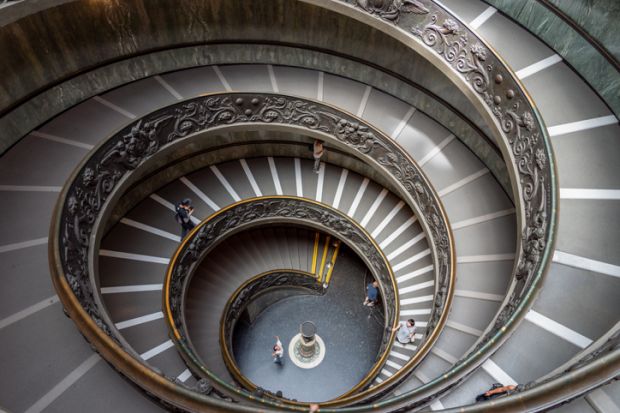If you had to choose one object to represent what higher education means to you, what would it be?
That was the challenge put to the participants in an online discussion on “The Imaginary Museum of Higher Education”, organised by the University of Edinburgh’s Higher Education Research Group.
David Green, vice-chancellor of the University of Worcester, proposed Wendy Macdonald’s 2009 children’s book, Galileo’s Leaning Tower Experiment, which he saw as “a reminder of some fundamental principles” and “a springboard to action”. When the elderly Galileo was forced in 1633 to publicly recant his view that the earth goes round the sun, it illustrated clearly how powerful people try to “disrupt and attack the work [of researchers] whose ideas contradict their interests”.
A recent example, Professor Green suggested, concerned Conservative MP Chris Heaton-Harris, who “wrote to most [British] vice-chancellors asking them to name names and hand over the syllabi to show what was being taught about Brexit...I made it clear I would go to prison rather than giving the names, [but] a Freedom of Information Act request from the BBC established that half of the universities contacted gave Mr Heaton-Harris absolutely everything that he asked for.” It was therefore essential that university leaders acquired the courage to “speak truth to power and fight discrimination”.
Rajani Naidoo – Unesco chair in higher education management at the University of Bath – wanted to donate to the proposed museum “the competition fetish in higher education”.
She used the word “fetish”, she explained, “because there is a magical belief that competition will solve all the problems of higher education”. Yet in reality much competition between universities rewarded the elite, so “vested interests protect the mechanisms which maintain the most dominant institutions in the most powerful positions...My plea is that competition does not remain a fetish that fossilises higher education into dysfunctional stratification.”
As director of Universities Scotland, Alistair Sims wanted to put in the museum his organisation’s 2016 commitment by leaders of member institutions, Working to Widen Access, which he believed had achieved substantive results but also, at a time when government and the academy often talk past each other, “symbolised a much more intelligent and values-driven dialogue between government and higher education”.
Asked about “safe spaces” and “challenges to academic freedom which come in the name of progressive politics”, Professor Green expressed his opposition to cancelling speakers with controversial – but perfectly legal – opinions and argued that “we should be debating the most articulate exponents of the views with which we disagree”.
However, Professor Naidoo felt “very torn about the issue”, agreeing that “we need to expose young people to both sides of the argument” but also recalling her experience as one of very few black students at a South African university. While she was “struggling to make a home for myself” there, she reflected, “it would have had a really negative effect on me if speakers very much opposed to ending apartheid had been allowed on campus”.
Register to continue
Why register?
- Registration is free and only takes a moment
- Once registered, you can read 3 articles a month
- Sign up for our newsletter
Subscribe
Or subscribe for unlimited access to:
- Unlimited access to news, views, insights & reviews
- Digital editions
- Digital access to THE’s university and college rankings analysis
Already registered or a current subscriber? Login








